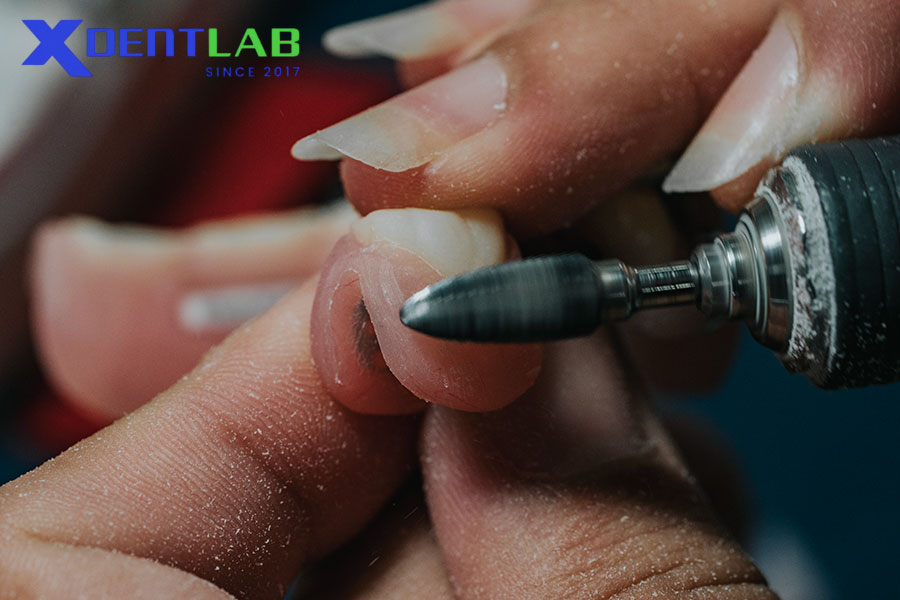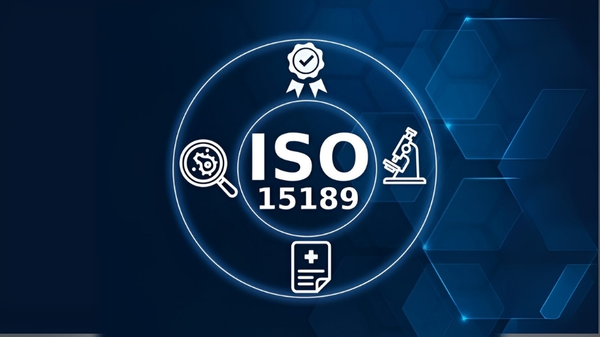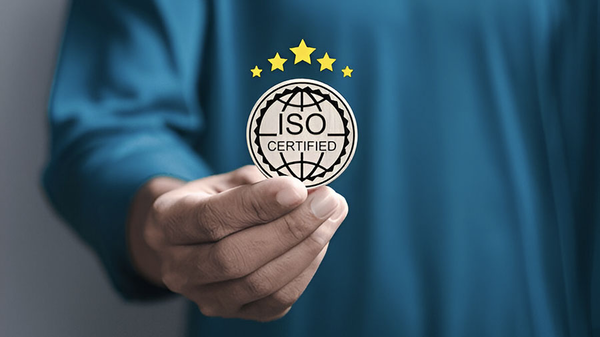Creating a safe work environment in dental labs is a human commitment to the technicians whose craftsmanship shapes every restoration delivered to patients. By adopting a safety framework, strengthening infection control protocols, investing in education, and embracing digital workflows, dental labs can build environments that are safer, more resilient, and more future-ready.

Table of contents [Show]
- Introduction
- Why Safety In Dental Labs Has Been Overlooked
- Understanding Infection Risks At Dental Labs
- Real Cases, Real Consequences
- Building a Culture of Safety Inside the Lab
- Foundational Safety Frameworks Every Dental Lab Owners And Technicians Should Know
- A Global, Universal Safety Framework for All Dental Labs
- Practical Safety Checklist for Dental Lab Owners
- The Role of Digital Dentistry in Safety
- Conclusion
Introduction
For decades, conversations about safety in dentistry have focused almost entirely on clinicians, while dental lab technicians, the people who quietly handle contaminated impressions, prostheses, and restorative materials every single day, have remained in the background. Their work is vital to every treatment outcome, yet their exposure to occupational risks is often overlooked.
A safe work environment in dental labs is more than a set of rules or compliance checklists. It is about people. It is about protecting the skilled hands that craft precision restorations, the eyes that concentrate under magnification for hours, and the lungs that breathe the air circulating inside the laboratory. It is about caring for the individuals who make modern dentistry possible.

At XDENT LAB, this understanding shapes our approach to safety. We view it not as a regulatory requirement but as a responsibility to every person who contributes to our work. Safety functions as a shared ecosystem, where each individual involved in creating the final restoration deserves to be protected and supported. This human-centered mindset is the foundation for everything that follows.
Why Safety In Dental Labs Has Been Overlooked
Historically, lab technicians worked behind the scenes, far removed from the clinical operatory. Many early laboratory owners believed that only “patient-facing” professionals were exposed to risks such as saliva, blood, and aerosols. Before 1981, most technicians were unaware of the potential dangers associated with handling impressions, dentures, crowns, and bridges fresh from the patient’s mouth. They assumed infection risk belonged exclusively to the clinic, not the lab. The problem was visibility. Because the risks were indirect, they were easy to underestimate.
However, this perception changed dramatically when documented cases began to surface, highlighting the reality that cross-contamination can occur even without direct patient contact.
Understanding Infection Risks At Dental Labs

Every item that enters the dental lab may carry saliva, blood, or both. Research shows:
Hepatitis B can live outside of the host at room temperature for at least 1 month
Hepatitis C can survive up to 6 weeks in dried blood on surfaces at room temperature.
Respiratory diseases such as Influenza, COVID-19, and respiratory syncytial virus( RSV) remain viable for hours to days, depending on the surface and temperature.
Even without needles and invasive procedures, technicians face genuine risk through indirect contact: touching contaminated items, tools, trays, or work surfaces. The risk is not only occupational, it extends to families and loved ones outside the lab. This reinforces a key principle: A safe dental lab protects not just employees but also their households.
Real Cases, Real Consequences
This risk becomes real when illustrated through actual cases. One of the most defining moments in dental laboratory history occurred in 1981. Bernard M. Sabatini, a respected dental lab technician, was diagnosed with Hepatitis B, a virus capable of causing chronic illness, liver cancer, liver failure, and even death. Six months earlier, he had accidentally cut his finger on the metal clasp of a partial denture he was repairing. Later, it was discovered the patient who wore that denture was a Hepatitis B carrier. There was no direct contact. No operatory. No needle-stick injury. Yet cross-contamination occurred. This case permanently changed how the industry views infection risk in labs. It emphasized a truth that still matters today:
Dental lab technicians are healthcare professionals, and they face healthcare-level risks.
Building a Culture of Safety Inside the Lab
Safety is not a one-time training, it is an ongoing culture shaped by:
Leadership commitment
Transparent communication
Technician participation
Continuous improvement
A “culture of safety” means every technician knows:
what the risks are
what the protocols require
why those protocols matter
and how their actions protect the entire team
At XDENT LAB, we believe that when labs shift from rule-based compliance to culture-based safety, everything improves: morale, efficiency, and long-term health outcomes.
Foundational Safety Frameworks Every Dental Lab Owners And Technicians Should Know
Although regulatory requirements differ across countries, the principles remain universal. In the United States, OSHA’s Bloodborne Pathogens Standard (1992) requires:
A written Exposure Control Plan (ECP) in which a dental lab’s Standard Operating Procedures (SOPs) must clearly outline job-specific exposure risks, establish preventative procedures, and define the daily practices that protect technicians from infectious diseases and injury.
Annual training and education
Post-exposure evaluation and reporting procedures
However, OSHA alone is not enough, and not all labs operate in the U.S. This is why global standards are crucial.
A Global, Universal Safety Framework for All Dental Labs
Regardless of geography, every dental lab should follow a universal safety framework rooted in four pillars. These principles are recognized worldwide (CDC, WHO, and international dental safety bodies):
Pillar 1: Prevention
Mandatory hygiene and handwashing protocol
Appropriate use of personal protective equipment for every technician
Disinfection of impressions and prosthetics before entering the production line
Pillar 2: Environmental Control
Clear zoning between clean and contaminated areas
Air quality management and ventilation
Surface disinfection schedules
Proper waste handling
Pillar 3: Education & Competency
Safety training during onboarding
Annual refresher programs
Simulation drills for exposure events
Pillar 4: Documentation & Review
Clear, written Standard Operating Procedures for all safety protocols
Detailed logs of incidents, exposures or near-misses
Yearly program evaluation
Including technicians in discussions about updating and refining safety procedures
This framework is universal, scalable, and effective for any dental lab in any country, regardless of size.
Practical Safety Checklist for Dental Lab Owners
Below is a clear, actionable checklist you can apply immediately.
Daily
Disinfect all incoming impressions and prostheses
Clean and disinfect high-touch surfaces
Enforce personal protective equipment (PPE) usage
Perform hand hygiene at key moments
Weekly
Review contamination logs
Check ventilation and air filters
Inspect PPE stock levels
Monthly
Hold internal safety meetings
Update corrective actions
Conduct workstation audits
Annually
Renew training certifications
Review and revise SOPs/ECPs
Conduct full-lab safety performance evaluation
This checklist helps lab owners build the habit of structured, consistent safety practices.
The Role of Digital Dentistry in Safety

One of the most meaningful advancements in improving safety within dental manufacturing is the increasing use of digital impressions. Digital files allow technicians to work with clean, disinfected data rather than relying solely on physical trays that may carry saliva or blood. This enhances safety and efficiency without eliminating the need for traditional workflows.
At XDENT LAB, we welcome both physical impressions and digital scans, and we handle each type with the appropriate safety protocols. Our commitment to digital adoption is not about replacing physical methods, but about offering safer and more protective options whenever possible. We believe every technician deserves a work environment that minimizes unnecessary exposure to contaminants.
When choosing to send intraoral scans, it helps:
reduce exposure to potential pathogens,
reduce accidental cuts from impression trays and metal components,
reduce the need for repeated disinfection,
and support technicians’ long-term health.
This reflects a work philosophy built on care, respect, and responsibility, for our technicians, and our collaborating labs we serve. By embracing both physical and digital pathways, we ensure safety and flexibility while maintaining the highest standards of service.
Conclusion
Creating a safe work environment in dental labs is not an administrative requirement. It is a human commitment to the technicians whose craftsmanship shapes every restoration delivered to patients. Their work is precise, technical, and demanding, and they deserve conditions that protect their health just as much as clinicians do. By adopting a universal safety framework, strengthening infection control protocols, investing in education, and embracing digital workflows, dental labs can build environments that are safer, more resilient, and more future-ready.
At XDENT LAB, we strongly believe safety is a shared responsibility, and we are committed to contributing to a community where every technician, partner lab, and collaborator can thrive. When the people behind the work are protected, everyone wins, clinicians, patients, and the dental industry as a whole.
Let’s build a safer, and more sustainable dental lab community together.
References:
The Importance of Creating a Safe Work Environment for Technicians
XDENT LAB is an expert in Lab-to-Lab Full Service from Vietnam, with the signature services of Removable & Implant, meeting U.S. market standards – approved by FDA & ISO. Founded in 2017, XDENT LAB has grown from local root to global reach, scaling with 2 factories and over 100 employees.. Our state-of-the-art technology, certified technicians, and commitment to compliance make us the trusted choice for dental practices looking to ensure quality and consistency in their products.

Our commitments are:
100% FDA-Approved Materials.
Large-Scale Manufacturing, high volume, remake rate < 1%.
2~3 days in lab (*digital file).
Your cost savings 30%.
Uninterrupted Manufacturing 365 days a year.
Contact us today to establish a strategy to reduce operating costs.
--------❃--------
Vietnam Dental Laboratory - XDENT LAB
🏢 Factory 1: 95/6 Tran Van Kieu Street, Binh Phu Ward, Ho Chi Minh City, Vietnam
🏢 Factory 2: Kizuna 3 Industrial Park, Can Giuoc Commune, Tay Ninh Province, Vietnam
☎ Hotline: 0919 796 718 📰 Get detailed pricing
Share this post:





